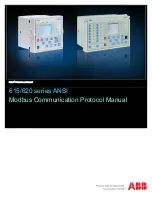
LT8611
16
8611fa
APPLICATIONS INFORMATION
Enable Pin
The LT8611 is in shutdown when the EN pin is low and
active when the pin is high. The rising threshold of the EN
comparator is 1.0V, with 40mV of hysteresis. The EN pin
can be tied to V
IN
if the shutdown feature is not used, or
tied to a logic level if shutdown control is required.
Adding a resistor divider from V
IN
to EN programs the
LT8611 to regulate the output only when V
IN
is above a
desired voltage (see the Block Diagram). Typically, this
threshold, V
IN(EN)
, is used in situations where the input
supply is current limited, or has a relatively high source
resistance. A switching regulator draws constant power
from the source, so source current increases as source
voltage drops. This looks like a negative resistance load
to the source and can cause the source to current limit or
latch low under low source voltage conditions. The V
IN(EN)
threshold prevents the regulator from operating at source
voltages where the problems might occur. This threshold
can be adjusted by setting the values R3 and R4 such that
they satisfy the following equation:
V
IN(EN)
=
R3
R4
+
1
• 1.0V
(10)
where the LT8611 will remain off until V
IN
is above V
IN(EN)
.
Due to the comparator’s hysteresis, switching will not stop
until the input falls slightly below V
IN(EN)
.
When operating in Burst Mode operation for light load
currents, the current through the V
IN(EN)
resistor network
can easily be greater than the supply current consumed
by the LT8611. Therefore, the V
IN(EN)
resistors should be
large to minimize their effect on efficiency at low loads.
Current Control Loop
In addition to regulating the output voltage the LT8611
includes a current regulation loop for setting the average
input or output current limit as shown in the Typical Ap-
plications section.
The LT8611 measures voltage drop across an external
current sense resistor using the ISP and ISN pins. This
resistor may be connected between the inductor and the
output capacitor to sense the output current or may be
placed between the V
IN
bypass capacitor and the input
power source to sense input current. The current loop
modulates the internal cycle-by-cycle switch current limit
such that the average voltage across ISP-ISN pins does
not exceed 50mV.
Care must be taken and filters should be used to assure
the signal applied to the ISN and ISP pins has a peak-to-
peak ripple of less than 30mV for accurate operation. In
addition to high crest factor current waveforms such as
the input current of DC/DC regulators, another cause of
high ripple voltage across the sense resistor is excessive
resistor ESL. Typically the problem is solved by using a
small ceramic capacitor across the sense resistor or using
a filter network between the ISP and ISN pins.
The ICTRL pin allows the ISP-ISN set point to be linearly
controlled from 50mV to 0mV as the ICTRL pin is ramped
from 1V down to 0V, respectively and as shown in Figure 3.
When this functionality is unused the ICTRL pin may be
tied to INTV
CC
or floated. In addition the ICTRL pin includes
a 2µA pull-up source such that a capacitor may be added
for soft-start functionality.
The IMON pin is a voltage output proportional to the voltage
across the current sense resistor such that V
IMON
= 20 •
(ISP-ISN) as shown in Figure 4. This output can be used
to monitor the input or output current of the LT8611 or
may be an input to an ADC for further processing.
Figure 3. LT8611 Sense Voltage vs ICTRL Voltage
ICTRL VOLTAGE (mV)
0
0
MAX V
ISP
-V
ISN
VOLTAGE (mV)
10
20
30
40
50
60
500
1000
1500
2000
8611 F03











































